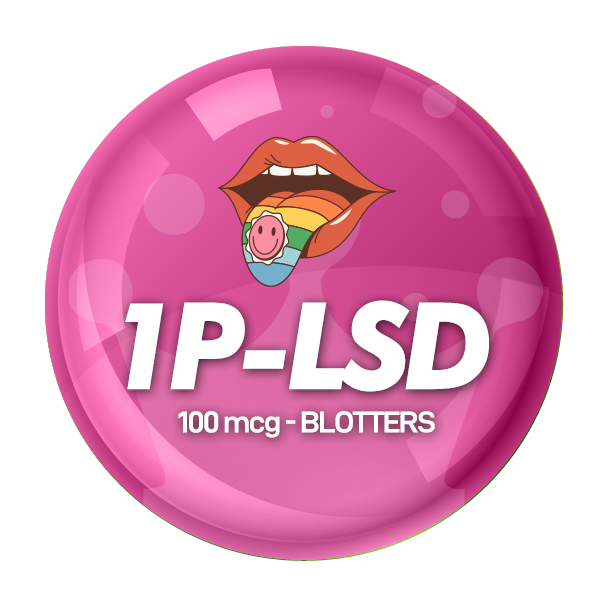The Future of Lysergamides Research: Unlocking New Frontiers in Psychedelic Science
In recent years, the world of research chemicals has exploded with curiosity, and at the center of this vibrant exploration lies lysergamides—a class of compounds most notably represented by LSD. But lysergamides encompass much more than just the iconic “acid”; they represent a fascinating realm of potential in neuroscience, psychiatry, and even creativity studies. As a unique group within the broader family of tryptamines and ergoline derivatives, lysergamides are capturing attention for their ability to alter consciousness, inspire creativity, and potentially serve as valuable tools in therapeutic contexts. Researchers are only beginning to scratch the surface of what lysergamides might reveal, and the journey ahead is poised to be groundbreaking.
Let’s dive into what lysergamides are, where the current research is headed, and the tantalizing possibilities that lie ahead for this dynamic field.

What Exactly Are Lysergamides?
Lysergamides are chemical compounds derived from lysergic acid, a naturally occurring substance found in certain fungi, like ergot. These compounds are part of a larger family of ergoline derivatives, a structure crucial in many biochemical and medical applications. The most well-known lysergamide is, of course, LSD (lysergic acid diethylamide), which made waves in the 20th century as both a therapeutic and recreational drug. Yet LSD is only the beginning of the lysergamide family, which also includes compounds like AL-LAD, ETH-LAD, and 1P-LSD, each with unique properties and potential applications.
Unlike some psychedelics that primarily affect serotonin receptors, lysergamides interact with multiple receptor sites in the brain. This gives them the ability to impact mood, cognition, and perception on a deep level, sometimes even in unique ways depending on the specific compound. It’s these interactions that are making lysergamides a hot topic for both pharmacological research and potential clinical use.
Why Are Lysergamides Gaining Attention?
In a world increasingly open to psychedelic research, lysergamides stand out for their consistency, potency, and manageable duration of effects. With the modern renaissance of psychedelics underway, researchers are returning to lysergamides to investigate their potential therapeutic and cognitive benefits. There are a few key reasons why lysergamides are garnering fresh interest in the scientific community:
Mental Health Treatment Potential: With traditional mental health treatments showing limitations, researchers are looking at psychedelics for new solutions. Studies suggest that lysergamides, through their serotonin receptor activity, may offer novel ways to address conditions like depression, PTSD, and anxiety. LSD, for instance, has shown promise in small trials as a treatment for depression, while other lysergamides are being tested for their antidepressant effects.
Creativity and Cognitive Enhancement: Anecdotally, psychedelics have long been associated with enhanced creativity and problem-solving abilities. Lysergamides are of particular interest here because they tend to produce more controllable and often shorter-lasting effects than other psychedelics, making them attractive for controlled, study-based settings. Researchers are exploring how low, controlled doses (microdosing) might influence creative thinking or help people tackle complex cognitive tasks.
Neuroscientific Insights: Every time we study a compound like LSD, we get a better understanding of how the brain works. Lysergamides have a unique effect on brain connectivity, often enhancing communication between different brain regions. This has led to intriguing studies on how these substances could improve cognitive flexibility or help “reset” the brain’s neural pathways, a potential breakthrough for those struggling with rigid thought patterns in mental illnesses.

We sell our products exclusively to customers aged 18 and over, strictly for research purposes only.

The Most Promising Lysergamides in Research Right Now
Among the various lysergamides, certain compounds are taking the spotlight in scientific studies. Here’s a look at some of the key players:
LSD (Lysergic Acid Diethylamide): The classic psychedelic, LSD is still a subject of ongoing research. Recent studies are examining its long-term therapeutic potential, especially in the context of mental health. Unlike other psychedelics with short-lasting effects, LSD’s enduring “trippy” effects, though potentially challenging in therapeutic settings, offer sustained engagement that could be harnessed for deeper psychological breakthroughs.
1P-LSD (1-Propionyl-lysergic acid diethylamide): Known as a “prodrug” of LSD, meaning it is metabolized into LSD in the body, 1P-LSD is gaining attention for its similar effects but shorter duration. This makes it easier to work with in controlled settings, where the lengthy duration of traditional LSD might be impractical.
AL-LAD (N6-allyl-nor-lysergic acid diethylamide): With slightly different effects than LSD, AL-LAD produces a less intense, often more visually stimulating experience. Its profile is attracting researchers looking for compounds that might provide similar therapeutic benefits with potentially lower risks of challenging psychological experiences.
ETH-LAD (N-ethyl-nor-lysergic acid diethylamide): ETH-LAD is another analog of LSD, known for a more intense visual experience and a shorter duration of action. Its unique profile could make it useful in therapeutic settings where a deep, immersive experience is beneficial but prolonged intensity might be counterproductive.
These compounds, while still under investigation, each offer something unique in terms of duration, effect, and potential application. Their nuanced properties allow researchers to explore lysergamides in a variety of contexts, from therapeutic settings to studies of brain connectivity and neuroplasticity.
Challenges and Ethical Considerations in Lysergamide Research
As with all research chemicals, lysergamides come with their own set of challenges. The legal landscape around psychedelics is complex, with some lysergamides still classified as controlled substances in many parts of the world. This limits the ability of researchers to study them openly and obtain funding.
Additionally, the ethical implications of psychedelic research cannot be ignored. There is a need for rigorous oversight and ethical guidelines to ensure that human participants are protected, especially when delving into altered states of consciousness that can be both profound and unpredictable.
Safety is a top priority. Even though lysergamides are considered relatively safe in controlled settings, there is still a risk of psychological distress or “bad trips” that could affect participants. Thorough screening, expert guidance, and established protocols are essential to mitigate these risks in clinical studies.

What’s Next for Lysergamides?
The future of lysergamide research looks promising. As legal frameworks adapt, more comprehensive studies will likely become feasible. Future research could include:
Expanded Clinical Trials: As the stigma around psychedelics continues to fade, larger clinical trials will become possible. These studies could provide concrete data on the efficacy of lysergamides in treating specific mental health disorders.
Exploration of Microdosing: With more anecdotal evidence supporting microdosing’s benefits for productivity and mood, the research community is keen to validate these effects scientifically. Microdosing studies on lysergamides might reveal new ways to harness the benefits of these compounds without the strong psychoactive effects.
Brain Imaging and Neuroscience Studies: Brain imaging technology is advancing, and psychedelic research stands to benefit. Using tools like fMRI, researchers can observe how lysergamides affect the brain in real-time, providing invaluable insights into how they influence neural networks, plasticity, and overall brain health.
Personalized Psychedelic Therapies: The idea of tailoring psychedelic experiences to fit individual mental health needs is already being discussed. As we understand more about lysergamides, we could potentially see them incorporated into a “personalized medicine” approach, where dosages and specific compounds are chosen based on an individual’s unique psychological profile.

Wrapping Up: The Journey Ahead
The field of lysergamide research is truly on the cusp of transformation, offering up a treasure trove of possibilities for unlocking the brain’s secrets, redefining mental health approaches, and sparking creative insights. With every new study, we’re peering deeper into this complex and captivating world of compounds, where lysergamides might just hold the key to groundbreaking mental health treatments or innovations in cognitive science.
Imagine the potential: a future where tailored lysergamide therapies help alleviate depression or anxiety, where microdosing could enhance creativity and productivity, and where the very structure of the human brain is better understood. The journey into lysergamide research isn’t just about discovery—it’s about reshaping what we know about the mind, consciousness, and our own human potential. As researchers and curious minds push forward, the path remains exhilarating and uncharted.
For scientists and enthusiasts alike, lysergamide research is not just a field—it’s an adventure filled with promise, ready for anyone brave enough to dive in. Enjoy the researching journey!
FAQ and How We Can Help
Frequently Asked Questions answered here; don’t hesitate to ask more!
Lysergamides are fascinating for their unique effects on the brain, from influencing mood to enhancing creativity. They interact with several brain receptors, offering potential as therapeutic tools for mental health issues like depression and PTSD. Researchers are drawn to lysergamides because each study seems to reveal something new about how they could transform mental health treatment.
Studies suggest that lysergamides might “reset” neural pathways, potentially breaking cycles of negative thinking in disorders like depression and anxiety. They’re also being examined for their ability to increase cognitive flexibility, which could be beneficial in therapy. While more research is needed, the possibilities are exciting!
While LSD is the most well-known, compounds like 1P-LSD, AL-LAD, and ETH-LAD are gaining traction. Each has unique effects and durations, offering researchers flexibility to explore different therapeutic or cognitive applications in a controlled way. Each compound’s unique properties could make it suited to different types of research or therapeutic needs.


